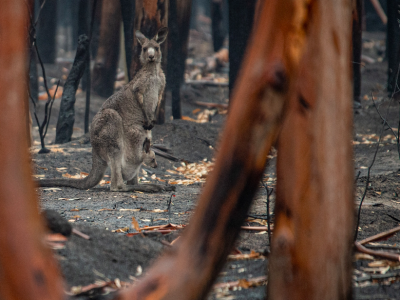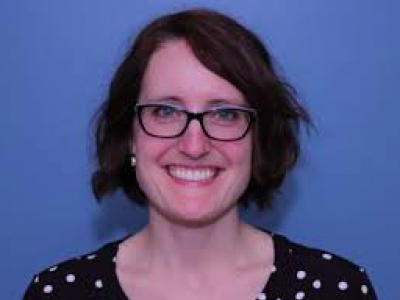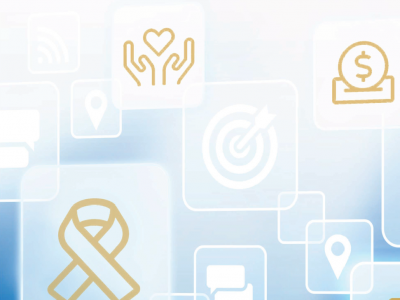Tori Peacock is an MPNL graduate and a Stewardship and Donor Relations Associate at the SickKids Foundation, which is in the middle of a $1.5 billion campaign to raise money for new, state-of-the-art facilities. PANL Perspectives spoke to Peacock about what it’s like to be part of the biggest healthcare fundraiser in Canadian history. The interview, edited for length and clarity, is by Sherlyn Assam.
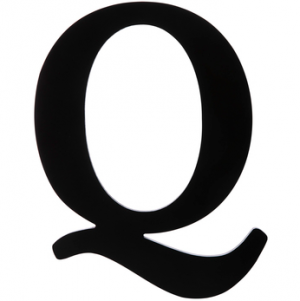 How does stewardship and donor relations differ in a billion-dollar campaign? Do you find a significant change depending on the campaigns, like fundraising for facilities rather than for research or events?
How does stewardship and donor relations differ in a billion-dollar campaign? Do you find a significant change depending on the campaigns, like fundraising for facilities rather than for research or events?
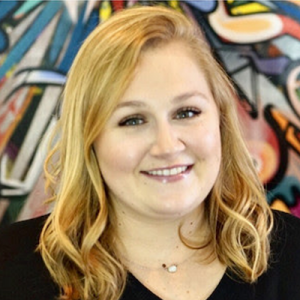 Peacock: I’d say the terminology and the language we use is different, and how we go about proposing and pitching the redevelopment of our campus, compared to research or events, are different. Our biggest issue is that it’s going to be a few years until the campus is fully redeveloped. We have to recognize donors in a way that’s meaningful while the building won’t necessarily be there yet. Figuring out digital recognition, print recognition, and how to move recognition in the current hospital over to the new hospital has been an interesting project for me. Also, we ensure that our donors are clearly communicated with and that they feel recognized during this interim stage of our campaign.
Peacock: I’d say the terminology and the language we use is different, and how we go about proposing and pitching the redevelopment of our campus, compared to research or events, are different. Our biggest issue is that it’s going to be a few years until the campus is fully redeveloped. We have to recognize donors in a way that’s meaningful while the building won’t necessarily be there yet. Figuring out digital recognition, print recognition, and how to move recognition in the current hospital over to the new hospital has been an interesting project for me. Also, we ensure that our donors are clearly communicated with and that they feel recognized during this interim stage of our campaign.
 What are challenges with the communications aspect of fundraising for such a campaign?
What are challenges with the communications aspect of fundraising for such a campaign?
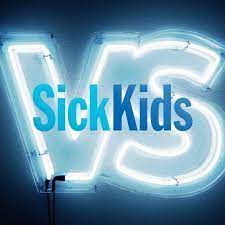 Peacock: I’d say the length of the campaign is part of the struggle to keep donors engaged. Also, the vast number of donors we have, and keeping their data and requests in line to ensure we’re providing the best donor experience — and making every single donor feel special and not like a number on a checklist. We pride ourselves on having that bespoke donor experience. It’s very customer-experience-centric. We want to get to the core of trying to make people feel special, and create more programs to enhance their individual experiences.
Peacock: I’d say the length of the campaign is part of the struggle to keep donors engaged. Also, the vast number of donors we have, and keeping their data and requests in line to ensure we’re providing the best donor experience — and making every single donor feel special and not like a number on a checklist. We pride ourselves on having that bespoke donor experience. It’s very customer-experience-centric. We want to get to the core of trying to make people feel special, and create more programs to enhance their individual experiences.
 What fundraising model and tactics are SickKids Foundation adopting?
What fundraising model and tactics are SickKids Foundation adopting?
Peacock: We’re focused on basics in regards to thank-you letters and thank-you phone calls. We try to hand-sign every thank-you, and we physically mail them. Yes, that’s strenuous and considered “old school” — it can take a lot of time and energy — but the return can’t be compared to something digital. Anytime we mail anything to a donor, whether that be an impact report, an invitation or tax receipt, we try to add a handwritten note from the respective relationship manager. Throughout the year, we’ll send postcards of patients’ stories. And all of these don’t have another ask attached to them. We think this is increasingly important to show value and show we’re not knocking on their door for another donation.
 What do you consider the most rewarding part of this campaign, considering you have yet to reach the goal?
What do you consider the most rewarding part of this campaign, considering you have yet to reach the goal?
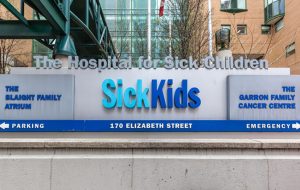 Peacock: Working with the families and seeing them come together to name something or recognize a tribute child, or a child currently undergoing treatment — that, to me, is huge. I had the privilege of working with one family that wants to name a specific area in a cancer unit in honour of their child. Hearing that story and understanding it makes an impact on what I’m doing and why I’m doing it. They’re rallying their community to raise a large sum of money, and being able to share their vision and make it come to life has been fun and extremely rewarding. When I learn more about a family or organization that has a certain tie to the hospital, I can create something special for them, something that makes them remember they’re important, something meaningful.
Peacock: Working with the families and seeing them come together to name something or recognize a tribute child, or a child currently undergoing treatment — that, to me, is huge. I had the privilege of working with one family that wants to name a specific area in a cancer unit in honour of their child. Hearing that story and understanding it makes an impact on what I’m doing and why I’m doing it. They’re rallying their community to raise a large sum of money, and being able to share their vision and make it come to life has been fun and extremely rewarding. When I learn more about a family or organization that has a certain tie to the hospital, I can create something special for them, something that makes them remember they’re important, something meaningful.
 How has the pandemic affected the campaign?
How has the pandemic affected the campaign?
Peacock: We’ve been fortunate, as we could continue to focus on our core fundraising for the campaign and evolve as the COVID pandemic changed. SickKids has led a lot of research about COVID. With similar children’s hospitals, we’ve led the research of COVID in children. We’re nimble as a foundation and hospital, because we need to be quick to respond to communication coming from the government and infectious-disease leaders in the paediatric space. Luckily, we had a lot of interest in how our building was going. COVID hasn’t affected our fundraising too much; we just pivoted in the short term. There’s been research into vaccines, PPE, decontamination and COVID-testing units. It brought out many community members who might not have been able to donate funds in the past; they donated PPE or food for example. People just wanted to help, and it was beautiful to see our community expand.
Tori Peacock is on LinkedIn. Sherlyn Assam is on LinkedIn and Twitter. Photos are courtesy of Peacock and SickKids Foundation.
